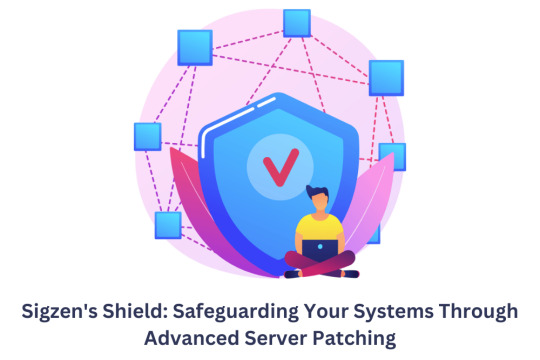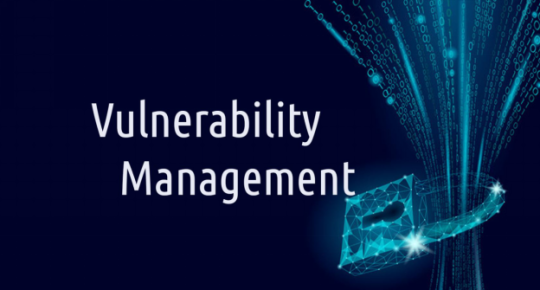#infrastructure vulnerability
Explore tagged Tumblr posts
Text
What If "The President Is Missing" Actually Happened? A Cyberattack, a Blackout, and the Quiet Collapse
I read The President Is Missing by James Patterson and Bill Clinton a few weeks after it was released, and honestly, it left my mind spinning. It’s one of those political thrillers that you race through because it feels like it’s building toward something huge. The story is gripping, sure—it has a U.S. president, high-stakes espionage, betrayal, shadowy operatives—but what really stayed with me…
#Bill Clinton#blackout#brownout#communication breakdown#critical infrastructure#cyber warfare#cyberattack#cybersecurity#digital dependence#digital warfare#electricity crisis#electricity grid#emergency preparedness#energy security#fictional thriller#geopolitical tension#global impact#Iberian blackout#infrastructure vulnerability#internet shutdown#James Patterson#modern warfare#national security#political suspense#power grid collapse#power outage#real-life scenario#technological vulnerability#technology failure#The President is Missing
0 notes
Text
Downtown today, and I'm suddenly realizing the transition to cashless payment systems, where some places don't even take cash payment, and many people don't carry cash anymore, has probably fucked over the homeless population something awful.
#don't mind me#just realizing another way urban systems fuck over the most vulnerable people#(as opposed to rural lack-of-systems fucking over vulnerable people)#but infrastructure is supposed to make life better#not worse
15 notes
·
View notes
Text
I've had more than one anarchist I associate with be surprised to learn I'm actually not an anarchist. But like. I'm a huge proponent of the Welfare State, and you kind of need a state for that
#welfare#welfare state#food stamps#Medicaid#medicare for all#universal healthcare#ubi#ssi#if a government isn't going to take care of its people then the government has no use to the people at all#so like I'm down for dismantling a system that only exists to rule and oppress and watch us die#and i don't mean 'fascists are okay if they make the trains run on time' type shit bc I'm staunchly antifascist#but like i do think a government can take care of even the most vulnerable of its populace if it really wants to. it just doesn't want to#undesirables who can't turn the cogs of capitalism are to be disposed of in most governments. esp the United States via#passive eugenics#anyway#revolution or not if the medical infrastructure goes down for any reason then me and a fuckton of other undesirables are dead#also this next statement is less towards anarchists specifically and more for like utopic commune people but anyway#if your utopia is based on 'work to live/earn your place' you are not a leftist you are a capitalist with a woke vocabulary#and i hate you
125 notes
·
View notes
Text
AI-Driven Cyberattacks, Climate Change, and the Fragility of Modern Civilization
The weaponization of advanced artificial intelligence (AI) systems stands as one of the most plausible and catastrophic risks facing modern civilization. As AI capabilities accelerate, so too does their potential to destabilize the complex, interdependent systems that sustain our societies—namely, power grids, communication networks, and global supply chains. In a scenario increasingly discussed…

View On WordPress
#AI Cybersecurity#AI Disinformation#Biosphere Collapse#Cascading Failures#Civilization Collapse#Climate Change#Collapse of Industrial Civilization#Critical Infrastructure#Cyberattack Resilience#Digital Vulnerability#Ecological Overshoot#Environmental Crisis#Feedback Loops#Geopolitical Risk#Global Supply Chains#Infrastructure Fragility#Power Grid Security#Social Unrest#Societal Resilience#Systemic Risk#Technological Dependence
2 notes
·
View notes
Text
Does anybody else feel the waves of history crashing over them constantly and like they can't escape the generational trauma that permeates and poisons every interaction they have or do I just need to chill and have a drink lol
#'our day has come and we are here. we are alive here. we've built this place. we suffered and starved here.#we own not an acre of land we belong to it. the land of cú chullain and macha. ní muid 'hungry crocodiles'. we are full.#full of knowledge. and talent. and success.#full of drink. and drugs. and stories.#agus beautiful ceol. that spills on sundays. from the windows of ancient pubs like smoke#tá vóta agam. tá acht Gaeilge agam. agus táimid sa rialtas.#we are the landscape. we are the trees and the rivers and the mountains. an integral piece of someone else's infrastructure.#growing strong between cracks in the concrete.'#and whatever else seán an seanchaí said.....#would recommend his instagram. his posts always hit#ngl tho when men post stuff like this about ireland i always think...do you see the similarities between this and patriarchy tho?#but maybe im better off not knowing the answer#whatever!!! we will persevere!!! we will help one another and build trust and relations and improve no matter what governments say or do!!!#just like generations have been doing before us!!! and we who have benefited from our parents making this place better will work to make it#better for our children. who will make it better for theirs.#and maybe i need to stop shying away from difficult conversations. maybe we all do. and maybe then we'll be okay.#my thoughts on mental health + the north + my own personal experience is such a mish mash of several different things#im only truly starting to realise that it's all connected. yes i got depression because i was lonely and vulnerable. but also because of th#trauma my family's been through. and sometimes i feel so angry thinking about what certain family members have been through#and there has been too much silence surrounding it. but maybe i just have to feel the anger and sadness and allow myself to feel it#but continue reaching out and trying to talk and having cups of tea and walking my dog and making memories.#memories that aren't political or based on trauma. to get out of my head and realise that yes this was a terrible thing#but there's so many good things too. and the best thing i can do is to try to make life better for those who lived through the worst of it#and make society better for those who are too young to know any of it yet.#instagram is actually a tonic for me sometimes. would never get such taig specific posts on here like the one from seán#which is probably a good thing lol
11 notes
·
View notes
Text
#Urbanization#Climate Change#Environmental Sustainability#Urban Resilience#Climate Mitigation#Climate Adaptation#Green Cities#Vulnerable Populations#Flooding#Drought#Air Pollution#Green Infrastructure#Renewable Energy
1 note
·
View note
Text
Sigzen Technologies's Shield: Safeguarding Your Systems Through Advanced Server Patching
Sigzen Technologies’s Shield represents a paradigm shift in the landscape of cybersecurity defenses. Its multifaceted approach encompasses not just basic patching but a holistic, proactive strategy to fortify systems against evolving threats. This section aims to delve deeper into the core innovations that set Sigzen Technologies’s Shield apart in the domain of advanced server patching. Enhanced…

View On WordPress
#Advanced Server Patching#Data Security#Information Security#IT Infrastructure#IT Management#IT Security#Network Protection#Patch Management#Server Management#Server Security#Technology Solutions#Vulnerability Patching
2 notes
·
View notes
Text
Complexity Monitoring Device for Local Anomaly Detection in Networks
The blog provides a brief description of a Quantitative Complexity Management-based (QCM) network monitoring device. The QCM technology has been under development by Ontonix since 2005. Numerous applications have been developed which span various sectors of the industry, economics, finance and medicine. In the majority of cases, QCM solutions are used for following…

View On WordPress
#Complexity#complexity management#critical infrastructures#Extreme problems#fragility#infrastructure protection#networks#resilience#system monitoring#system of systems#vulnerability
2 notes
·
View notes
Text
in a dreadful training right now. she tried to "make it fun" and...girl please just lecture me. we do not need to do crosswords and games and art projects every 10 minutes. this is a room full of adult healthcare professionals.
#let me drink coffee and zone out in peace#longest 4.5 hours of my life bro#2 more left to go#ntm she's doing the whole forced vulnerability thing#like springing really heavy topics with no warning and no agreed upon infrastructure for#ppl who are emotionally overwhelmed. she just leaves them to hyperventilate while saying like#'wow beautiful connection...'#im being a complete blank faced robot in rebellion lol#i just wanna go back to my dept and WORK. tired of this nonsense.
0 notes
Text
How weak is essential infrastructure to cyberattack within the US?
Our water, well being, and power methods are more and more weak to cyberattack. Now, when tensions escalate — like when the US bombed nuclear services in Iran this month — the protection of those methods turns into of paramount concern. If battle erupts, we are able to anticipate it to be a “hybrid” battle, Joshua Corman, government in residence for public security & resilience on the Institute…
0 notes
Text
Unclaimed containers, foreign-run ports, and AI drones—could they become America’s hidden threat? A speculative warning with real-world roots.

View On WordPress
#autonomous drones#BNSF railroads#drone warfare#logistics vulnerability#national security risk#Operation Rising Lion#port security#Speculative Fiction#unclaimed containers#US infrastructure
0 notes
Text
360° Cybersecurity for Your Business Secure. Monitor. Defend — with BCS From endpoint protection to threat detection — we’ve got your back. 🔍 Book Your Free Security Assessment
#cybersecurity#artificial intelligence#business#riskmanagement#vulnerability#it managed services#it infrastructure#ransomware protection
0 notes
Text
Yemen Emergency Appeal: How Your Help Can Make a Difference
The ongoing crisis in Yemen has reached catastrophic levels, leaving millions in urgent need of humanitarian assistance. Devastating floods, coupled with years of conflict and economic collapse, have plunged the nation into one of the world’s worst humanitarian crises. At Penny Appeal Canada, we are committed to making a tangible difference, but we can’t do it without your support. This is your opportunity to contribute through the Yemen Emergency Appeal and bring hope to countless lives.
The Situation in Yemen: A Crisis of Unimaginable Scale
Yemen is grappling with a combination of challenges that have left its people in desperate conditions:
Catastrophic Flooding: Recent floods have displaced thousands, destroyed homes, and wiped out infrastructure. Families are left without shelter, food, or clean water.
Food Insecurity: Over 17 million people face severe hunger. Children are the worst affected, with malnutrition rates alarmingly high.
Healthcare Collapse: The country’s healthcare system is barely functional. Diseases such as cholera are rampant, and there’s a dire need for medical supplies.
What is the Yemen Emergency Appeal?
The Yemen Emergency Appeal is a life-saving initiative designed to provide immediate and sustainable relief to those affected by this crisis. Our efforts focus on:
Emergency Food Aid: Delivering essential food supplies to families on the brink of starvation.
Clean Water Access: Providing safe and clean water to prevent waterborne diseases.
Shelter and Supplies: Offering emergency shelter kits and necessities to displaced families.
Medical Assistance: Supplying medicines and medical care to vulnerable communities.
Your Contribution Matters
Every donation, no matter the size, plays a vital role in our mission. Here’s how your support can make a difference:
$50: Provides emergency food supplies to a family for a month.
$100: Helps set up clean water stations in flood-affected areas.
$200: Offers medical aid and hygiene kits to families in need.
Your generosity can save lives, restore dignity, and give hope to those who feel forgotten.
Why Support Through Penny Appeal Canada?
When you donate through Penny Appeal Canada, you are assured that your contributions reach those who need it most. We work with trusted partners on the ground in Yemen to ensure transparency, accountability, and efficiency in delivering aid.
How to Donate
Supporting the Yemen Emergency Appeal is quick and easy:
Visit our Yemen Floods Project Page.
Choose your donation amount.
Complete your secure transaction online.
By taking just a few moments today, you can bring relief to Yemen’s most vulnerable.
Together, We Can Make a Difference
The situation in Yemen is dire, but together, we can provide hope and relief. Through the Yemen Emergency Appeal, you have the power to make a meaningful impact. Let’s stand united in compassion and action—because every moment counts.
Donate today and be the light that shines in Yemen’s darkest hour.
Would you like any adjustments or additions to this draft?
#The ongoing crisis in Yemen has reached catastrophic levels#leaving millions in urgent need of humanitarian assistance. Devastating floods#coupled with years of conflict and economic collapse#have plunged the nation into one of the world’s worst humanitarian crises. At Penny Appeal Canada#we are committed to making a tangible difference#but we can’t do it without your support. This is your opportunity to contribute through the Yemen Emergency Appeal and bring hope to countl#The Situation in Yemen: A Crisis of Unimaginable Scale#Yemen is grappling with a combination of challenges that have left its people in desperate conditions:#1.#Catastrophic Flooding: Recent floods have displaced thousands#destroyed homes#and wiped out infrastructure. Families are left without shelter#food#or clean water.#2.#Food Insecurity: Over 17 million people face severe hunger. Children are the worst affected#with malnutrition rates alarmingly high.#3.#Healthcare Collapse: The country’s healthcare system is barely functional. Diseases such as cholera are rampant#and there’s a dire need for medical supplies.#________________________________________#What is the Yemen Emergency Appeal?#The Yemen Emergency Appeal is a life-saving initiative designed to provide immediate and sustainable relief to those affected by this crisi#•#Emergency Food Aid: Delivering essential food supplies to families on the brink of starvation.#Clean Water Access: Providing safe and clean water to prevent waterborne diseases.#Shelter and Supplies: Offering emergency shelter kits and necessities to displaced families.#Medical Assistance: Supplying medicines and medical care to vulnerable communities.#Your Contribution Matters#Every donation
0 notes
Text
What Are Top 3 Vulnerability Management Metrics to Measure in 2025
In today’s rapidly evolving cybersecurity landscape, staying ahead of potential threats is essential. Companies face a relentless onslaught of security vulnerabilities, and effectively managing these vulnerabilities has become critical for safeguarding data and maintaining regulatory compliance. One of the primary methods to assess the security posture of any organization is through vulnerability management and penetration testing. In 2024, certain key metrics have emerged as essential for effectively managing vulnerabilities, aiding businesses in minimizing risks while optimizing their security strategy.

This article will explore the top three vulnerability management metrics to measure in 2024, focusing on their significance in shaping a robust security program, and highlighting how penetration testing plays an integral role.
1. Vulnerability Detection Rate
The Vulnerability Detection Rate is a metric that reflects how effectively your organization identifies security vulnerabilities within its IT infrastructure. A higher detection rate indicates that the organization has robust tools and processes in place for continuous monitoring and assessment, which is crucial for early-stage vulnerability management.
Why It Matters: In 2024, the growing sophistication of cyber threats makes the Vulnerability Detection Rate a key performance indicator (KPI) for cybersecurity teams. An accurate and high detection rate allows teams to discover potential vulnerabilities before they are exploited. It also helps organizations quantify the effectiveness of their scanning tools, Vulnerability Scanning protocols, and penetration testing procedures.
How to Measure It: The Vulnerability Detection Rate is typically calculated by dividing the number of detected vulnerabilities by the total vulnerabilities present, which can be estimated based on past data and testing results. Organizations should strive for real-time detection capabilities using tools that integrate vulnerability management with penetration testing solutions. This hybrid approach allows for both automated and manual detection of weaknesses across endpoints, applications, and networks.
Penetration Testing's Role: Penetration testing acts as a simulated attack on the system, testing the detection capabilities of an organization. Conducting regular penetration tests helps verify that vulnerabilities are detected accurately and promptly, which can reveal any gaps in detection mechanisms. A comprehensive penetration test offers insights into vulnerabilities that automated tools may overlook, helping cybersecurity teams to refine their detection tools and strategies.
2. Mean Time to Remediation (MTTR)
Mean Time to Remediation (MTTR) is a crucial metric for understanding the efficiency of an organization’s response to identified vulnerabilities. MTTR calculates the average time taken to fix a vulnerability after its detection. Keeping this metric low is essential for preventing the exploitation of vulnerabilities and ensuring that identified threats do not remain in the system long enough to cause harm.
Why It Matters: The faster an organization remediates a vulnerability, the less time attackers have to exploit it. With the increasing rate of zero-day vulnerabilities in 2024, cybersecurity teams must act quickly once vulnerabilities are identified. A short MTTR not only indicates an agile response capability but also helps in meeting regulatory requirements and reducing potential financial or reputational damage.
How to Measure It: To measure MTTR, calculate the time between when a vulnerability is identified and when it is resolved. Divide the total remediation time across all vulnerabilities by the number of resolved vulnerabilities within a specific timeframe. It is best practice to track MTTR by severity level (e.g., high, medium, low), as high-risk vulnerabilities should generally have a shorter MTTR than low-risk ones.
Penetration Testing's Role: Penetration testing supports MTTR by identifying specific weaknesses in systems and applications, thereby guiding prioritized remediation efforts. It helps highlight vulnerabilities that pose the greatest risk, allowing teams to allocate resources effectively and improve response times. When Penetration Testing is conducted regularly, it can also reveal recurring vulnerabilities, helping teams streamline their remediation processes and reduce MTTR.
3. Vulnerability Reopen Rate
The Vulnerability Reopen Rate metric measures the frequency at which previously remediated vulnerabilities reappear, indicating that previous fixes may have been insufficient or temporary. A high reopen rate suggests that there are issues within the patch management or remediation processes, or that vulnerabilities have returned due to configuration changes, software updates, or inadequate fixes.
Why It Matters: In 2024, complex infrastructures and third-party dependencies mean that vulnerabilities can recur due to software updates or overlooked configurations. A high Vulnerability Reopen Rate can indicate a need for improved patching practices, better configuration management, or more thorough penetration testing to verify that vulnerabilities are completely resolved. Reducing the reopen rate not only boosts security posture but also conserves resources by minimizing repetitive work for security teams.
How to Measure It: Calculate the Vulnerability Reopen Rate by dividing the number of vulnerabilities that have reappeared after initial remediation by the total number of vulnerabilities resolved over a given period. Tracking this metric over time helps organizations understand the consistency and effectiveness of their remediation efforts.
Penetration Testing's Role: Penetration testing is critical in validating that vulnerabilities have been properly remediated. After a vulnerability is patched or mitigated, conducting a follow-up penetration test ensures that the issue has been fully addressed. This practice not only helps to keep the Vulnerability Reopen Rate low but also verifies that patches have not inadvertently created new vulnerabilities. Regular penetration tests are instrumental in keeping this metric under control by providing an extra layer of verification and reducing the chances of vulnerability reoccurrence.
The Role of Penetration Testing in Vulnerability Management Metrics
Incorporating penetration testing into vulnerability management goes beyond simply identifying security gaps; it enhances the entire vulnerability management process. Penetration testing, when conducted consistently, provides a real-world perspective on the security posture of an organization, helping cybersecurity teams to accurately assess and improve each metric. Here’s how:
Improving Detection Accuracy: Penetration testing helps assess the accuracy and coverage of detection tools, enabling organizations to fine-tune their scanning and monitoring systems.
Prioritizing Remediation Efforts: By highlighting high-risk vulnerabilities, penetration tests help in prioritizing and reducing MTTR, as they show which areas need immediate attention and streamline the remediation process.
Ensuring Lasting Remediation: Penetration testing verifies that vulnerabilities have been remediated effectively, which in turn helps in maintaining a low Vulnerability Reopen Rate.
Conclusion
In 2024, vulnerability management metrics like Vulnerability Detection Rate, Mean Time to Remediation (MTTR), and Vulnerability Reopen Rate will be pivotal in measuring and improving an organization’s cybersecurity resilience. Penetration testing plays an indispensable role in supporting these metrics, offering a comprehensive approach to identifying, prioritizing, and validating remediation efforts. By focusing on these metrics and integrating regular penetration testing, organizations can bolster their security posture and reduce their risk of cyber-attacks. Emphasizing these metrics helps companies build a proactive and effective vulnerability management strategy, making 2024 a year of fortified defenses against an evolving threat landscape.
#Vulnerability management metrics#Penetration testing#Cybersecurity resilience#Vulnerability Detection Rate#Mean Time to Remediation (MTTR)#Vulnerability Reopen Rate#Cyber threats#Vulnerability scanning tools#Security posture#IT infrastructure vulnerabilities
0 notes
Text
#Urbanisation#Joshimath#Landslides#Biodiversity#Ecosystem services#Municipal Corporation#Vulnerabilities#Infrastructure#Cultural heritage
1 note
·
View note
Text
Attention-Worthy Links for November 24th, 2024
#Undersea Cables#Sabotage#Finland#Germany#H5N1#California#influenza#Maldives Floating City#rising sea levels#COP29#climate-vulnerable#chloronitramide#never been studied#billion trees#farmland#natural#habitat#disruption#resign#Return to Work#resistance#mobilization#disillusionment#habituation#infrastructure#water#Hackers#DefCon#drug agents#seizure
0 notes